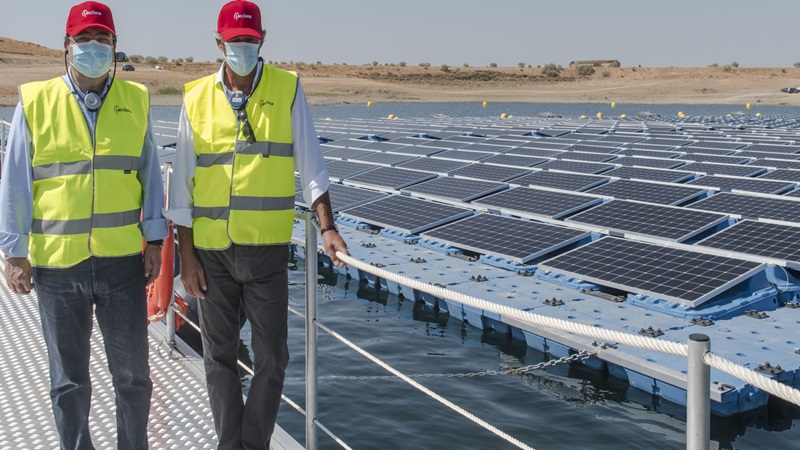
Gemma Saravia
The First Floating Photovoltaic Plant in Catalonia is Up and Running
Most Read Stories Today
-
Water Scarcity and Artificial Rainfall: The Positive and The Negative Effects of Cloud Seeding, including Health Hazards and Climate Implications.
-
Renewable Energy in Rural Areas: Challenges, Opportunities, and Successful Rural Projects
-
Pakistan's Agriculture at Risk Due to Climate Variability
-
South Africa's Recent Floods: Is Climate Change to Blame?
-
South Korea's floods: root causes and prevention strategies.
-
South Africa: Cape Town, A City Under Fire
-
The Human Cost of Climate Disasters
-
Our Oceans, Our Future: The South African Dilemma of Overfishing
-
Degenerative Impact of Hydrocarbons On The Environment.
-
Sustainable Urban Planning - Copenhagen and the Path to Climate Resilience
It is a structure made up of 195 photovoltaic panels placed on polyethylene floats on a 1,745 square meter rainwater collection pond in the Riera de Gaià, in Tarragonès.
The plant has a power of 105 kWp and will generate 140,000 kWh in a year, equivalent to the consumption of 43 homes, which will cover 30% of the company's needs.
Javier Jofré, the marketing manager of the agricultural biotechnology company Atens, dedicated to the production of natural fertilizers based on fungi and biological products for the new ecological agriculture, emphasizes that the plant, in addition to saving on electricity bills, manages to reduce water losses due to evaporation. "With this installation we are killing two birds with one stone: we are solving the problem of electricity generation with clean technologies and, in addition, we are improving water quality, with less algae and less evaporation."
Atens' head of engineering and maintenance, Josep Maria Gil, remarks that putting plates on the trump instead of a roof has entailed less work and risks, and also gains in energy efficiency. "We did not have, in terms of roofs and the farm, a space equivalent to the surface of the pond. It was also a bet for innovation and to be pioneers, and, in addition, we have a better yield of electricity production, because the plates in summer do not heat up as much above the water as they would on a roof."
The installation company, SUD Renovables, has already planned a similar plant in Alt Penedès. According to Manel Romero, co-founder of SUD, Catalonia has to take advantage of this type of installation to extend the energy production of renewables, and it is also a demonstration of the possibilities of integration in rural areas. "There are agricultural areas that should be preserved and these installations help. Floating plants are an example of the versatility of photovoltaic technology that has to help extend renewables and make the energy transition possible. We cannot entrust everything to rooftop installations, we won't have enough or go fast enough."
In the Segarra-Garrigues canal alone there are more than 34 large surface reservoirs and the company is now working on a study to determine the number of reservoirs that could accommodate this type of installation in Catalonia. The cost of these installations is not much different from those placed on the roofs of warehouses and houses, with an increase of just over 15%, but they do have to have certain technical characteristics to adapt to the volume of water in the pond. Although the system is very common in other countries, it is just beginning to be implemented here. In fact, the Spanish government is finalizing a royal decree to enable the installation of photovoltaic infrastructures in a hundred reservoirs in the public water domain.
Edited by: Muhammad Abdullahi Ibrahim

Terms & Conditions
Subscribe
Report
My comments